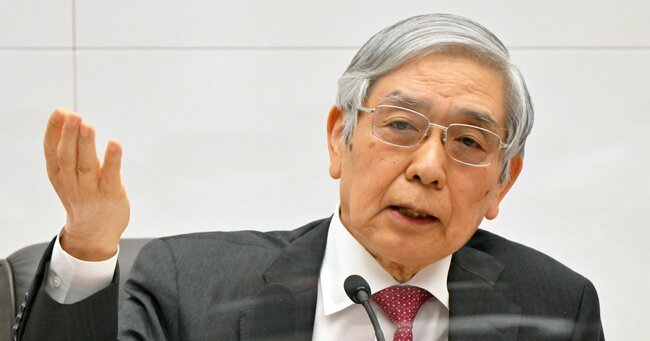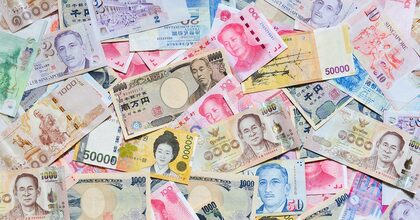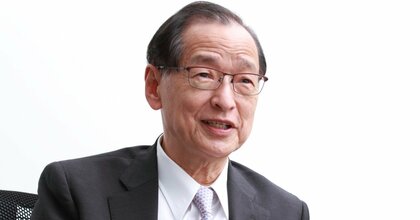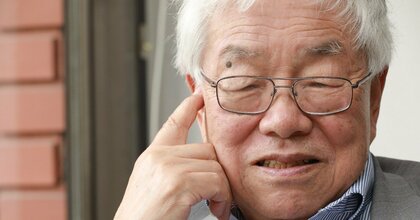Originally published in Japanese on Jan. 20, 2023
‘All-out war’
“They’re preparing for an all-out war to defend yield-curve control.”
The Bank of Japan (BOJ) maintained its massive monetary easing program at the Jan. 17-18 monetary policy meeting, but Shunsuke Kobayashi, the chief economist at Mizuho Securities, notes that important adjustments were made that should not go overlooked. The central bank announced that it would expand its funds-supplying operations against pooled collateral. The change can be viewed as a desperate attempt by the BOJ to encourage lower yields on Japanese government bonds (JGBs) in the face of upward pressure on long-term rates.
What are the funds-supplying operations? First, the BOJ lends to financial institutions using funds backed by JGBs and other collateral that has been pledged by the institutions. Financial institutions can use the funds to purchase government bonds with interest rates, thereby realizing arbitrage transactions that earn interest margins with no risk. In early January ahead of the policy meeting, the BOJ was pressed to conduct an irregular funds-supplying operation to provide funds at zero interest rates for a loan period of two years.
The move is in line with the current extension of monetary easing. The funds-supplying operations, which previously lent at a fixed interest rate of 0%, now allow for the interest rate to be adjusted each time a loan is made.
“Put simply, the BOJ has been hesitant to ‘lend 10-year funds at zero interest,’ but now it will be possible to ‘lend 10-year funds at 0.3%,’” Kobayashi wrote in a report after the Jan. 17-18 meeting. “As a result, the BOJ expects financial institutions to ‘use the funds borrowed at 0.3% to purchase 10-year JGBs yielding 0.4%.’”
In other words, the change will strengthen arbitrage transactions, including on the 5-year and 10-year JGB. In the words of Governor Haruhiko Kuroda at the press conference following the meeting, "We can encourage a decline in yields for a longer period of time without directly affecting the actual supply and demand for JGBs.”
In retrospect, the sparring match between the BOJ and the market has been unfolding since the yen weakened and yields began rising last spring. It was the “first act” in the back-and-forth between the two.
The match entered its second act with the changes to the funds-supplying operations and the monetary policy meeting on Dec. 20, 2022. That meeting led to confusion after the BOJ raised the permitted yield cap on long- and short-term yields. In this second act, where will the BOJ and market spar?
It is important to first understand what happened in the first act. Since the spring of 2022, the BOJ has faced a rapidly weakening yen and rising long-term yields. Addressing one of these issues would exacerbate the other. The trend of the yen’s depreciation continued unabated, and last fall it temporarily hit 150 yen per dollar for the first time in about 32 years.
Things changed drastically with the policy changes in December. The first act came to an end when the BOJ raised the permitted long-term yield cap to about 0.5% from about 0.25%. Speculative movements weakening the yen stopped.
Takahide Kiuchi, the executive economist at Nomura Research Institute and a former policy board member at the BOJ, said the central bank is unlikely to once again face a scenario in which it must struggle with both a weakening yen and rising yields. “The BOJ sent a message of policy flexibility with the December policy revisions, so it’s difficult to imagine a scenario where the exchange rate returns to 140 or 150 yen per dollar again in the near term,” he said.
Second act
So where will the BOJ and markets struggle in act two? The stage is now set for a fight over long-term yields.
The BOJ’s December moves to allow long-term yields to rise to about 0.5% spurred overseas speculators to sell more JGBs. When there is upward pressure on JGB yields, the BOJ responds by buying government bonds, placing further pressure on speculators to sell. Speculators are now testing the BOJ’s tolerance at the 0.5% upper limit for yields.
Why was the BOJ once again forced into conflict with the market? The key point is that the cap on long-term yields was raised because of the distortion of the yield curve.
“Once the BOJ expanded the permitted range of movements, citing a need to improve market function, continued distortions in the yield curve will lead to speculation of further increases in the upper limit, further distorting the yield curve,” wrote Ryutaro Kono, chief economist at BNP Paribas.
Since the inception of its unconventional monetary easing, the BOJ under Kuroda has attempted to influence market “expectations,” but now those expectations are influencing the central bank’s policy.
Looming changes
Depending on the contest between the BOJ and speculators over long-term yields and market conditions, the BOJ may further revise its policy at its March policy meeting. BNP’s Kono has forecast the central bank could raise the yield cap on 10-year JGBs to 1% from 0.5% in one step.
“Assuming that the negative interest rate policy will remain in place, the reasonable value of the 10-year yield without yield-curve control is just under 1%,” said Kono. “Raising the upper limit to 1% would correct the distortion of market function for a period of time. It could be 0.75%, but that would again create pressure to sell.”
The most important thing to watch in the immediate future is the appointment of the next BOJ governor. Reports indicate the appointment will be presented to the National Diet for approval on Feb. 10.
The three most likely candidates to be the next governor are BOJ Deputy Governor Masayoshi Amamiya, former Deputy Governor Hiroshi Nakaso, and former Deputy Governor Hirohide Yamaguchi. The proposed appointment could impact not only monetary policy over the next five years, but also the March policy meeting.
“If Amamiya (who has supported Kuroda's policies) is the proposed appointee in February, long-term yields are unlikely to rise, but if it is Yamaguchi (who is considered the most hawkish of the three), market participants will sell JGBs and say they cannot buy at the 0.5% 10-year rate,” said Mizuho Securities’ Kobayashi.
In other words, the choice for the next governorship could disrupt the bond market because of speculation over future policies after the next governor assumes their position. If the conflict between the market and the BOJ intensifies, it will likely impact the policy decisions in March.
Conservatives within the ruling Liberal Democratic Party, including former Prime Minister Yoshihide Suga, have openly criticized the Kishida administration. In the “Truss Shock” of last fall, the market turned on former British Prime Minister Liz Truss over the inconsistencies of her plan to cut taxes, causing the pound to plummet and British bonds to plunge, forcing Truss to step down. The Kishida administration’s choice for the BOJ governor could spark a similar crisis that would destabilize the administration itself.
(Originally written in Japanese by Yasutaka Nagayoshi, translated and edited by Connor Cislo)











